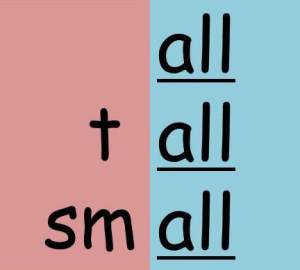The End of the Word
The end of the word, not world. It can feel like it when the sprog is struggling on and then just loses concentration, but there is a great book and a simple method to help them move towards whole word recognition that compliments their skills learned in studying phonics.
I received an article from a friend. It’s a study which shows how awareness of phonological (sound) units larger than single graphemes ( letters and letter combinations) or phonemes (sounds of the letters or letter combinations) can help readers to correctly pronounce printed words (Treiman et al, 1995 ‘The Special Role of Rimes in the Description, Use, and Acquisition of English Orthography). I suspect teachers of young children have known this forever, but it seems that by helping children to recognize the large number of word endings whose pronunciation is all but fixed, we can improve their reading skills.
Perhaps the most useful book on the market for introducing word endings is Dr. Seuss”Hop on Pop’. The title image for this post uses words from this book to illustrate the point. Last night I asked my daughter to read Hop on Pop with me. Actually I challenged her to read it and bribed her with the promise of ice-cream (let’s keep the conversation real). Anyway, we read it together doing a page each as it’s quite a long book. There were only a couple of words that challenged her, but on the whole she was able to read all of the words by herself. So why bother writing about it?
There are words that she has remembered as sight words, but there are also words that she has not. These words she sounded out, just as we practiced. The only problem with this approach is that it takes so long. We want to develop our children to be skilled readers and so we need to help them develop the necessary skills.
We began chunking the words, but we didn’t start with the initial sounds. I covered all the initial consonants and read the final vowel + consonant before asking her to read the whole word. Initially she still tried to sound out the word from the beginning, but as she got used to the system she began to move smoothly through those words with the same ending.
There are many benefits to having learned to read using phonics. The challenge after the initial success is to wean the sprog from sounding out letter combination in every word and to help them speed up the process. This final sound reading activity works well with single syllable words in English, so it’s ideal for emergent readers using graded texts. It requires the young reader to develop their notion of sounds in English from single characters and combinations of vowels (ea) or consonants (ch) to sounds that contain more letters than they are used to (each). These larger phonemes are potentially more useful than the individual elements that constitute them.



Brilliant! I love Dr Seuss, even though I’ve heard some people call it out-of-date… No way! In front of me at the minute, I have Fox in Socks, How the Grinch Stole Christmas, Green Eggs and Ham, The Cat in the Hat, Horton and so on and so on. They are really good at – as you say – the sounds. And just as importantly, they’re fun. We had them on CD as well (did I sent it to you?) and used to play them in the car.